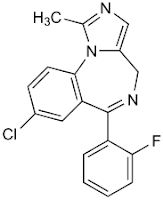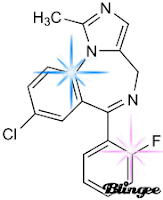Ian Roberts really, really wants you to give Tranexamic Acid (TXA) to trauma patients at risk for significant hemorrhage. Ideally, you'll read his recent paper in the BMJ, but if that doesn't grab your attention, he wrote a comic (pdf link) and a claymation video about it, too. There's even a cheesy but endearingly eager song about the drug. It's a laudable effort to get physicians interested in new research on a cheap, generic drug without any big pharma money behind it.
Dr. Roberts is an investigator on the CRASH-2 Trial (Clinical Randomisation of an Antifibrinolytic in Significant Haemorrhage), which enrolled over 20,000 patients worldwide in a double-blinded randomized trial on the effects of tranexamic acid in acute hemorrhagic shock. They showed that if given in the first three hours of a traumatic hemorrhage, this inexpensive and low risk drug can reduce mortality by 30%.
After the initial CRASH-2 results were published in 2010, few trauma patients were receiving the drug despite its inclusion on the WHO Essential Medicines List. That dilemma inspired Roberts to create the claymation video above. (Lancet: CRASH-2 goes viral).
Last month, a new CRASH-2 paper on subgroup analysis by risk of mortality was published in the BMJ. Then the London School of Hygiene & Tropical Medicine (LSHTM) launched the comic as the next step in their a campaign to publicize the trial results in hopes that more physicians will use TXA. They also published a series a videos about the trial on the LSHTM YouTube page. The NYTimes picked up the story. The comic is a quick read with salient learning points and an amusing amount of ED drama.
The streamlined, international research methodology of the CRASH-2 trial is impressive, but their publicity methods are equally inspiring. The latest BMJ study is a free, open access publication available on PubMed Central. The CRASH-2 home page offers extensive resources for clinicians about their research in 6 different languages. The multimedia resources convey both clinically relevant data and the enthusiasm of the investigators. This is an exemplary model of how to translate clinical research into clinical practice worldwide. I hope more investigators follow their lead. This is what FOAMed (Free Open Access Medical Education) is all about!
Research review:
Roberts I, Perel P, Prieto-Merino D, Shakur H, Coats T, Hunt BJ, et al.
Effect of tranexamic acid on mortality in patients with traumatic bleeding: prespecified analysis of data from randomised controlled trial.
BMJ 2012;345:e5839 PMID: 22968527 PMCID: PMC3439642
What is already known on this topic
Create your free online surveys with SurveyMonkey, the world's leading questionnaire tool.
Dr. Roberts is an investigator on the CRASH-2 Trial (Clinical Randomisation of an Antifibrinolytic in Significant Haemorrhage), which enrolled over 20,000 patients worldwide in a double-blinded randomized trial on the effects of tranexamic acid in acute hemorrhagic shock. They showed that if given in the first three hours of a traumatic hemorrhage, this inexpensive and low risk drug can reduce mortality by 30%.
After the initial CRASH-2 results were published in 2010, few trauma patients were receiving the drug despite its inclusion on the WHO Essential Medicines List. That dilemma inspired Roberts to create the claymation video above. (Lancet: CRASH-2 goes viral).
Last month, a new CRASH-2 paper on subgroup analysis by risk of mortality was published in the BMJ. Then the London School of Hygiene & Tropical Medicine (LSHTM) launched the comic as the next step in their a campaign to publicize the trial results in hopes that more physicians will use TXA. They also published a series a videos about the trial on the LSHTM YouTube page. The NYTimes picked up the story. The comic is a quick read with salient learning points and an amusing amount of ED drama.
 |
| “We have to do something about that bleeding. Get me an IV line and one gram of tranexamic acid now!" |
The streamlined, international research methodology of the CRASH-2 trial is impressive, but their publicity methods are equally inspiring. The latest BMJ study is a free, open access publication available on PubMed Central. The CRASH-2 home page offers extensive resources for clinicians about their research in 6 different languages. The multimedia resources convey both clinically relevant data and the enthusiasm of the investigators. This is an exemplary model of how to translate clinical research into clinical practice worldwide. I hope more investigators follow their lead. This is what FOAMed (Free Open Access Medical Education) is all about!
Research review:
Roberts I, Perel P, Prieto-Merino D, Shakur H, Coats T, Hunt BJ, et al.
Effect of tranexamic acid on mortality in patients with traumatic bleeding: prespecified analysis of data from randomised controlled trial.
BMJ 2012;345:e5839 PMID: 22968527 PMCID: PMC3439642
What is already known on this topic
- Tranexamic acid given to patients with traumatic bleeding within three hours of injury significantly reduces mortality with no apparent increase in adverse thrombotic events
- The beneficial effect of tranexamic acid on all cause mortality or deaths from bleeding is not affected by baseline risk of death
- There were fewer thrombotic events with tranexamic acid with no evidence of heterogeneity by baseline risk
- Use of tranexamic acid should not be limited to high risk patients
Additional resources:
St. Emlyns: Tranexamic Acid for Everyone?





